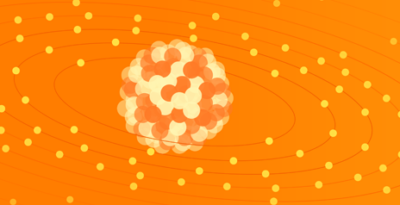Latest News
News List-
Research Summary
The research aims of this Unit are: To understand, predict, and control heat, particle, and momentum transport phenomena in systems where plasma contacts solids, liquids, and gases, from the open magnetic field region of a magnetic confinement fusion reactor to the wall, coolant, exhaust system, and the fuel circulation system, and applying the knowledge and techniques gained from the studies mentioned above to various fields outside the fusion field contributes to the advancement of those fields.

Figure. From left to right: a visible light image of LHD divertor plasma, beryllium distribution on the plasma-facing surface of the tungsten divertor plate in the JET tokamak device, an example of molecular dynamics simulation of hydrogen recycling in an amorphous carbon wall, an example of dissipative particle dynamics simulation of the formation of self-assembled structures in amphiphilic molecular systems. In a magnetic confinement fusion reactor, most of the deuterium and tritium introduced into the reactor as fuel is ionized and shielded by the edge plasma in the open magnetic field region outside the last closed magnetic surface, and thus does not contribute to the fusion reaction. Unreacted fuel particles must be exhausted, returned to the fuel supply system, and then introduced into the plasma as fuel. The energy flow out of the main plasma is transported in the edge plasma to the wall and the coolant. In this case, the integrity of the wall must be protected against the large heat load on the wall. Therefore, fusion reactor systems in steady-state operation require sophisticated control of particle and energy transport.
Thermal energy is converted from kinetic energy of plasma particles to light and electromagnetic waves, which further interact with matter. Depending on their energy states, materials circulating in the system undergo phase transitions to charged particles (plasma), neutral particles (gas), liquids, or solids in the system from the open magnetic field region of a magnetic confinement fusion reactor to the wall, coolant, exhaust system, and the fuel circulation system. The purpose of this unit in other words is to comprehensively understand energy and particle transport across such multiple-phase states, including the interactions among the phases, and to establish a new picture of fusion reactor systems.
In the transport of thermal energy, we focus on the effects of vibrational and rotational states of molecules in the conversion between kinetic energy of charged particles, light, and electromagnetic waves via atomic and molecular processes, as well as on the role of thermal instability in relation to the confining magnetic field geometry, on the dynamic response due to the nonlinearity of atomic and molecular processes. Furthermore, by viewing these physics as the interaction between light and matter and delving into the interaction between the electromagnetic field or momentum of light, the atomic nuclei, and bound electrons in matter, we aim to expand our research into areas, such as the formation of organic molecules in space (astrobiology) and plasma biology.
For particle circulation, this is taken as “non-equilibrium cross transport”. Non-equilibrium cross transport here is synonymous with the non-equilibrium cross effect, in which multiple gradients are driven and coupled in a general sense, but it also includes the meaning that theflow of circulation with directionality is considered as a non-equilibrium flow (transport), which is then driven by the cross transport. For example, in the case of plasma and neutral particles, the research will be conducted by considering both the control of plasma by neutral particles (micro) and the control of particle circulation by neutral gas (macro), each from a bird’s-eye viewpoint.
For the solid materials of the device wall of a fusion reactor, we will analyze the mass transfer phenomena between dissimilar materials such as copper alloy and the metal to be bonded with atomic level precision, and elucidate the question “Why is a strong joint with very few voids (high continuity) possible? from a microscopic viewpoint. The results obtained in this research have the potential for a wide range of engineering applications, including aerospace and electronics fields.
These issues will be addressed through experiments in torus-type and linear magnetic field devices, and through simulations using fluid models, particle and kinetic models, and molecular dynamics methods.
-
Recent Published Papers
Here, we introduce to some of the recently published papers as activities of our Unit.
Member
*:Unit Leader
-
Assist. Prof. GOTO, YukiFields Light-matter interactions
-
Assist. Prof. HAMAJI, YukinoriFields Plasma-material interactions
-
Assoc. Prof. KANNO, RyutaroFields Plasma physics
-
Guest Prof. KAWAGUCHI, HidekiFields Simulation of electromagnetic wavesAffiliate Muroran Institute of Technology
-
Prof. KOBAYASHI, MasahiroFields Plasma physics
-
Prof. MASUZAKI, Suguru (Chairperson)Fields Plasma science & engineering
-
Prof. MORISAKI, Tomohiro (Unit Leader)Fields Plasma science & engineering
-
Assoc. Prof. MOTOJIMA, GenFields Plasma science & engineering
-
Prof. NAKAMURA, HiroakiFields Condensed matter physics
-
Assoc. Prof. SHOJI, MamoruFields Plasma physics
-
Prof. TOKITANI, MasayukiFields Fusion material science
-
Project Prof. TOYODA, HirotakaAffiliate Nagoya University
-
Assoc. Prof. USAMI, ShunsukeFields Plasma physics
-
Project Researcher WANG, ChenxuFields Plasma Physics
-
Assist. Prof. YAJIMA, MiyukiFields Plasma science & engineering
-
Assoc. Prof. YOSHIMURA, ShinjiFields Plasma physics
-
Professional Staff YOSHIDA, Shigeru
-
Guest Researcher Yurii KovtunAffiliate KIPT (Ukraine)
External Member
-
ARAMAKI, MitsutoshiAffiliate Japan University, Prof.
-
EZUMI, NaomichiAffiliate Tsukuba University, Assoc. Prof.
-
IDO, TakeshiAffiliate Kyushu University, Prof.
-
HASUO, MasahiroAffiliate Kyoto University, Prof.
-
HATANO, YujiAffiliate Tohoku University, Prof.
-
KATO, MasahiroAffiliate Hiroshima University, Project Prof.
-
KAWAGUCHI, HidekiAffiliate Muroran Institute of Technology, Prof.
-
KOBAYASHI, KenseiAffiliate YOKOHAMA National University (YNU), Prof Emer.
-
KUBO, ShinAffiliate Chubu University, Prof.
-
SAITO, SeikiAffiliate Yamagata University, Assoc. Prof.
-
TANAKA, HirohikoAffiliate Nagoya University, Assoc. Prof.
-
TERASAKA, KenichiroAffiliate Sojo University
-
TOYODA, HirotakaAffiliate Nagoya University, Prof.
Publications
Contact
Email:PMI


